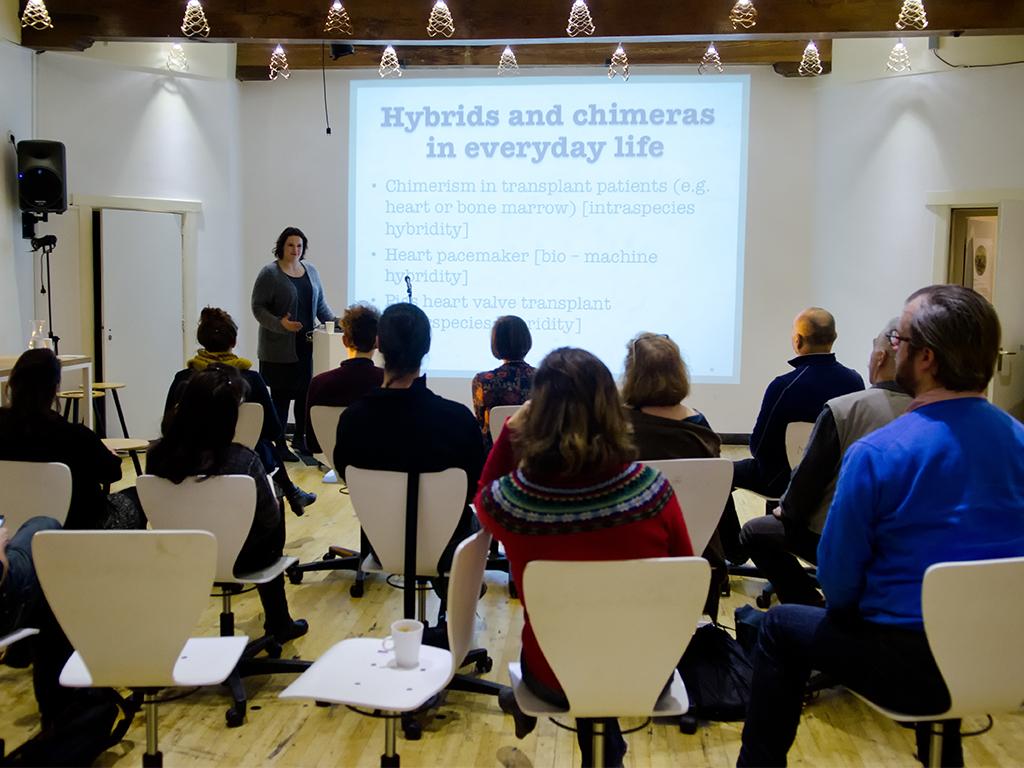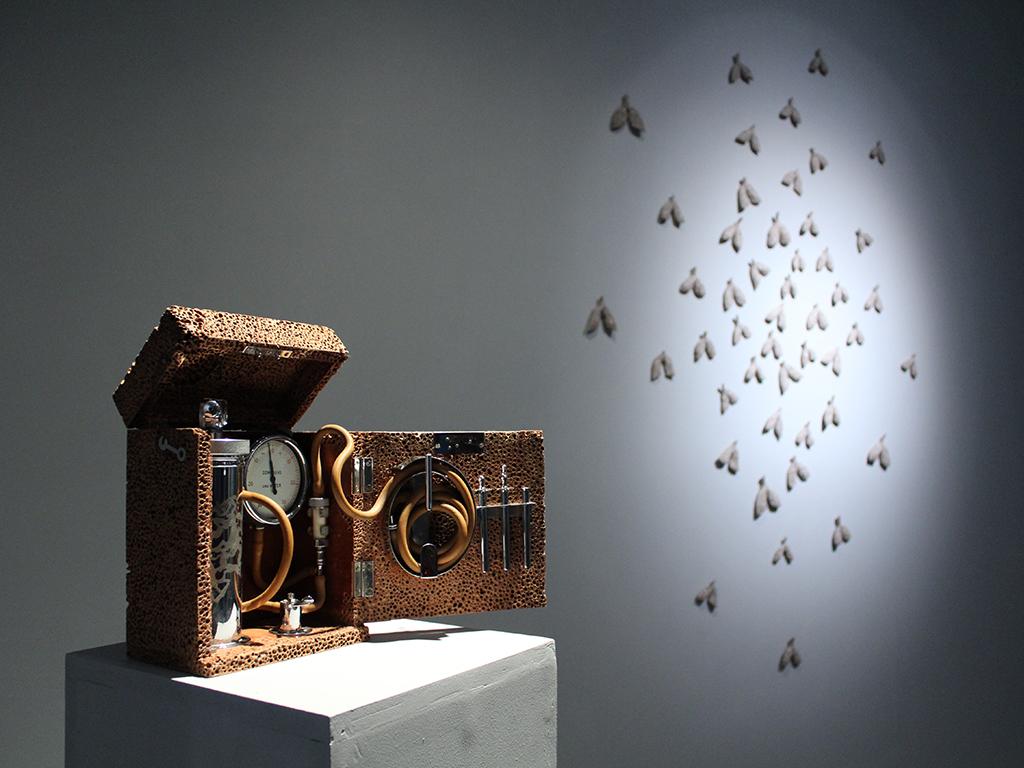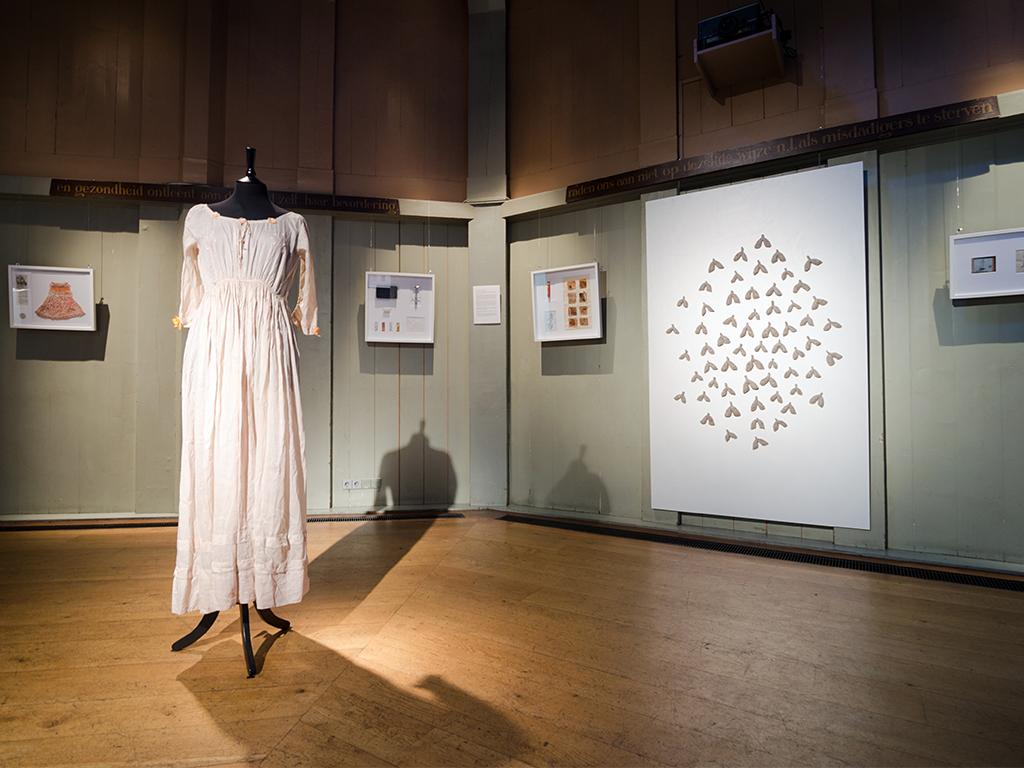Love Your Monsters - Why We Must Care for Our Technologies As We Do Our Children (Latour 2010)
Like Frankenstein, genetically modified organisms sometimes give me the creeps. So I was interested to find out what happens when technoscientific hybrids are examined with interest, instead of disgust. In ‘Hybrids, Chimeras and other Monsters’ the goal was to step away from the yuk-factor, and to take a closer look at BioArt from artists like Guy Ben-Ary. His thought-provoking work In-Potentia is a piece that transforms foreskin cells into neural networks using induced pluripotent stem cells (iPSCs) technology. IPSCs technology is a recent biomedical technique, which is still in experimental stage. This made me think about the development of biomedicine. What does ‘reprogramming’ cells do to the conceptualisation of what it means to be human?
Check out this video at YouTube
The in-depth interview with BioArtist Guy Ben-Ary, moderated by Laura Mudde really made my head spin. His art revolves around semi-living entities and questions of agency. His latest project In-Potentia is a speculative techno-scientific experiment with disembodied human material, diagnostic equipment and a stem cell reprogramming technique called induced pluripotent stem cells (IPSCs). In short, iPSCs are cells that have been reprogrammed from regular assigned cells such as skin cells, into stem cells, which can be reassigned into other cell types such as blood cells, or neurons. In-Potentia uses the method of iPSCs to reprogram foreskin cells into IPSCs, and then into neural networks. In this work, questions on the disembodiment of life are raised, which can be seen in the journey of foreskin cells into stem cells, and back into neurons. To me, this made me think of how life is never fixed, but always in a transit state, which was also emphasised in the lecture by Joanna Jeśman.
Joanna explained posthumanist theory, starting with the work of famous techno-feminist Donna Haraway and her classic work on the Cyborg. Like Frankenstein or the Terminator, the cyborg is a hybrid of nature and culture, part human and part machine. However, to what extent can the distinction be made as to what is machine, and what is nature? Examples of this hybridity can be found in everyday life, like contact lenses, pace makers, or even heart valves made of pigs. So in some aspect, aren’t we all cyborgs? A thing I learned from Joanna, is that it is important to love, cherish and investigate technoscientific monsters, these hybrids of nature and culture. Careful examination and critical investigations in BioArt give non-scientists like me a glimpse as to what goes on in the lab, and create space for questioning the motives and ethics of biotechnology and its development. In a very direct way, we are already posthuman.
‘Hybrids, Chimeras and Other Monsters’ was the first in the series living tissues and living issues, three evenings presented by the Open Wetlab that looks at how technology shapes new relations between organisms and in turn how technology is shaped by those organisms.


